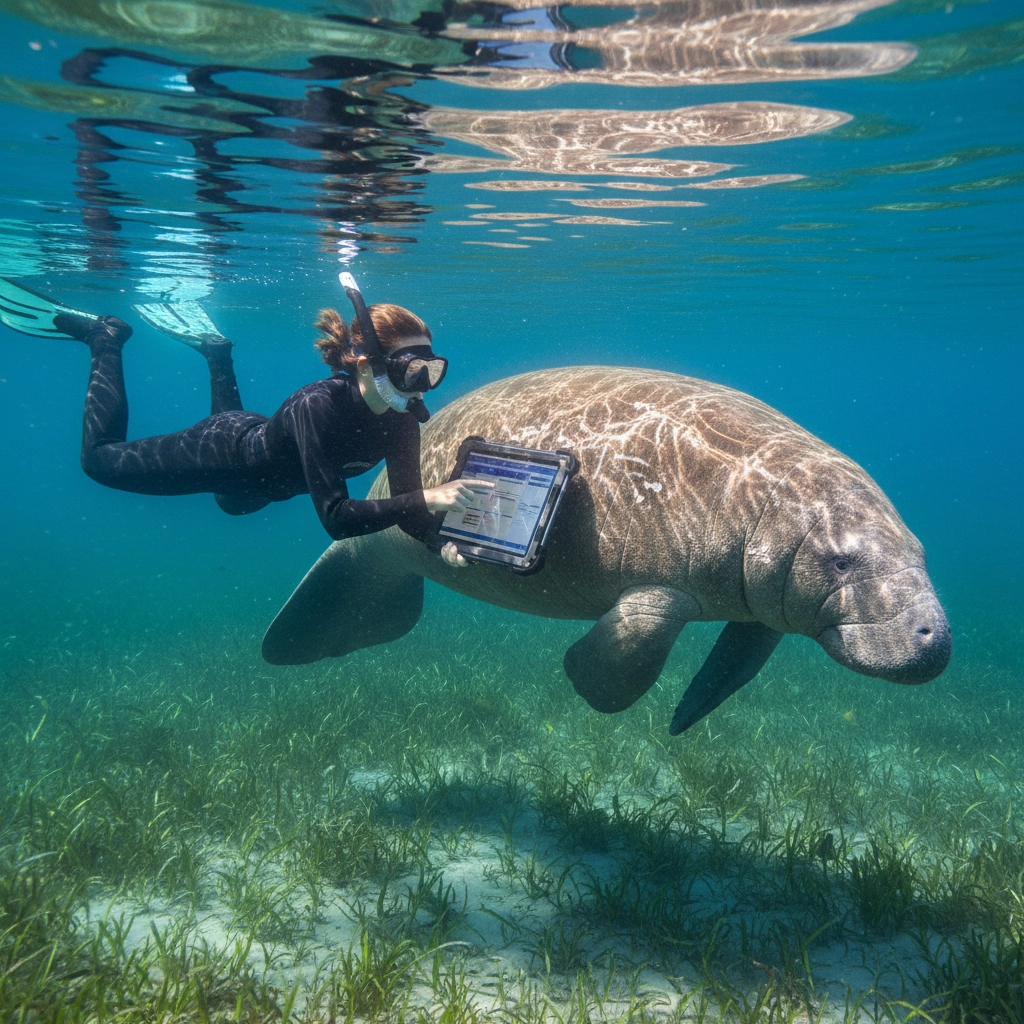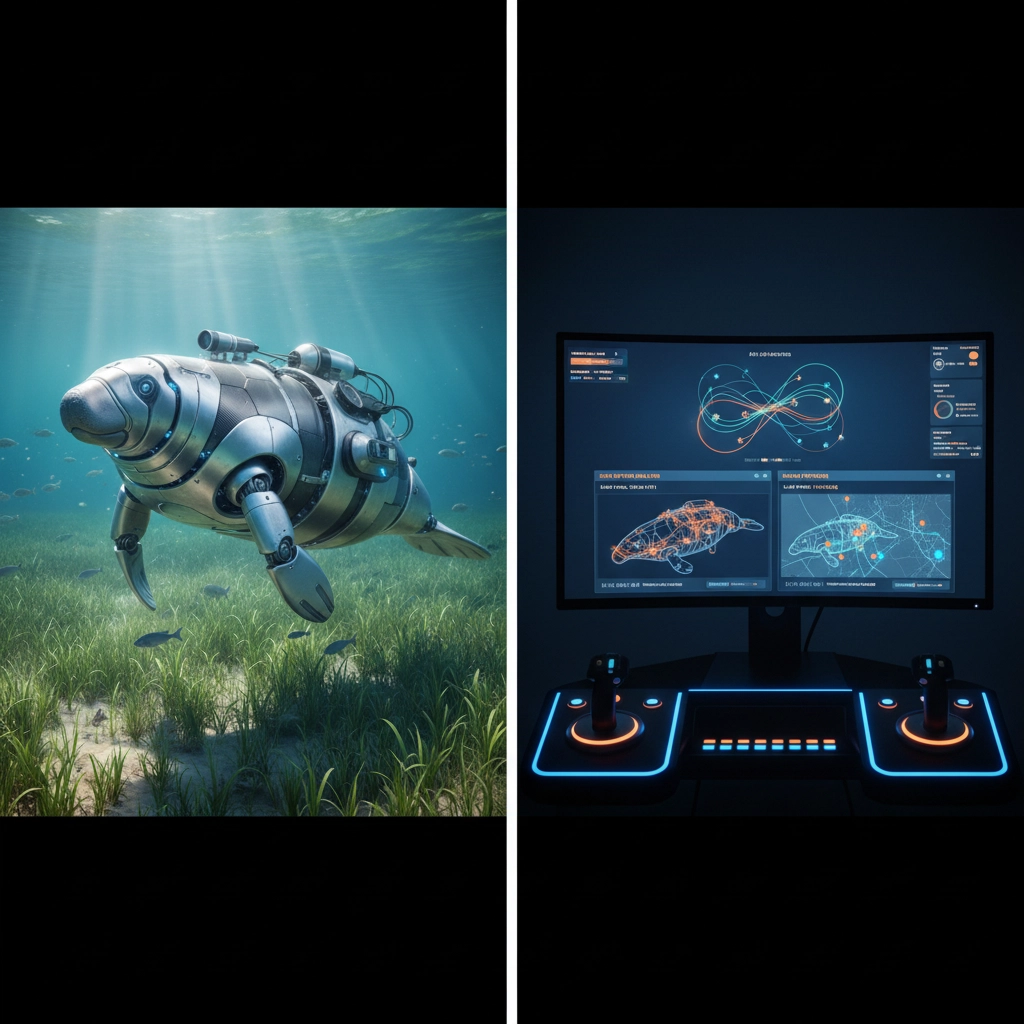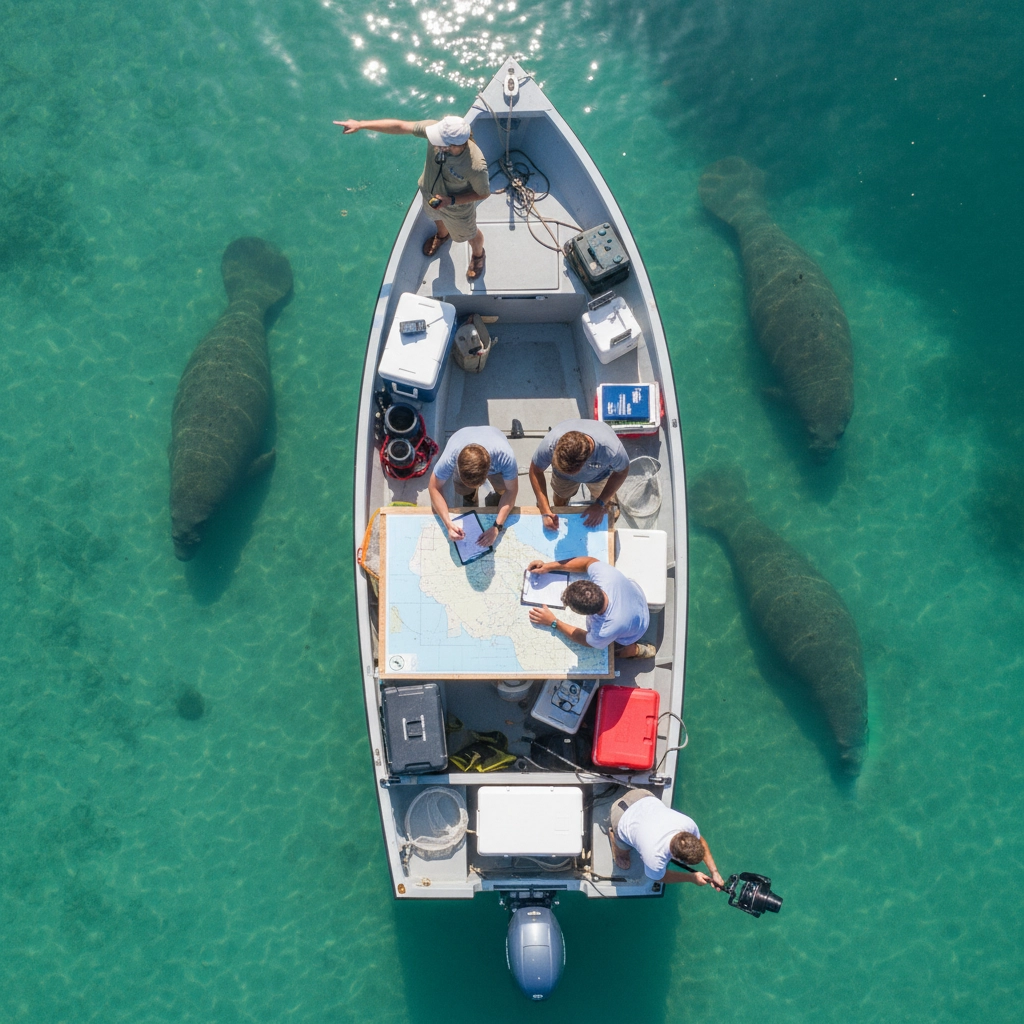Student-Led Manatee Research: From Fieldwork to Real Data
- Caleb Mullenix
- Oct 27
- 5 min read
Ensuring students gain authentic research experience while contributing to meaningful conservation efforts represents the pinnacle of educational travel programming. Student-led manatee research in Crystal River provides an unparalleled opportunity for learners to engage in legitimate scientific inquiry while directly supporting the protection of Florida's gentle giants. These programs transform students from passive observers into active participants in marine science, demonstrating how educational expeditions can produce real-world impact through rigorous fieldwork and data collection.
Establishing the Foundation: What Makes Student Research Legitimate
Student-led manatee research programs distinguish themselves from traditional field trips by emphasizing authentic scientific methodology and producing data that contributes to ongoing conservation efforts. Begin by understanding that legitimate student research requires partnerships with established research institutions, adherence to scientific protocols, and direct mentorship from professional marine biologists.
Jacksonville University's Marine Science Research Institute exemplifies this approach through their 25-year manatee monitoring program, where students participate in comprehensive research initiatives that directly inform conservation policy. Students engaged in this program conduct periodic aerial surveys, monitor vessel traffic patterns, and contribute to GIS analysis that identifies critical habitat areas. The program's graduate student researchers have produced significant findings, including documentation of latitudinal photoperiod effects on manatee migration patterns and identification of population hotspots within river systems.
Emphasize to students the importance of understanding that their work contributes to datasets spanning decades. Encourage students to recognize their role as part of a continuum of scientific inquiry, where their observations and measurements become permanent additions to scientific knowledge about manatee ecology and conservation.

Field Research Methodologies: From Observation to Data Collection
Implementing effective student research requires mastering fundamental field methodologies that ensure data quality while providing comprehensive learning experiences. Begin field research training by establishing standardized observation protocols that students can execute consistently across multiple research sessions.
Create detailed data collection sheets that guide students through systematic recording of manatee behavior, environmental conditions, and human impact factors. Ensure students understand the critical importance of recording precise GPS coordinates, water temperature measurements, visibility conditions, and time stamps for all observations. Students must learn to differentiate between individual manatees using natural markings, scar patterns, and distinctive physical characteristics.
Advise students on proper equipment handling for underwater cameras, GPS units, and water quality testing instruments. Emphasize the importance of maintaining equipment logs and conducting pre-research equipment checks to ensure data integrity. Students should master the use of standardized forms for recording boat traffic, tourist interactions, and environmental disturbances that may affect manatee behavior.
Develop student expertise in non-invasive observation techniques that minimize stress to marine mammals while maximizing data collection opportunities. Share protocols for maintaining appropriate distances from manatees, recognizing stress indicators, and adjusting research activities based on animal behavior and environmental conditions.
Advanced Technology Integration: AI and Robotics in Student Research
Modern student research programs increasingly incorporate cutting-edge technology to enhance data collection capabilities and provide students with experience using professional-grade research tools. Begin technology integration by introducing students to AI-powered image recognition systems that identify individual manatees based on unique scarring patterns and physical characteristics.
Students participating in collaborative programs with institutions like William & Mary learn to process underwater photography through deep learning algorithms that convert visual data into numerical identification vectors. This technology enables students to contribute to long-term population monitoring efforts while gaining experience with artificial intelligence applications in conservation biology.
Encourage students to engage with biomimetic robotics projects, such as Florida Institute of Technology's Mechanatee program, where students design and operate remotely operated vehicles that mimic manatee anatomy and movement patterns. These robotic platforms allow students to collect environmental data, record underwater acoustic signals, and observe manatee behavior without causing disturbance to wild populations.

Data Analysis and Scientific Communication
Transform raw field observations into meaningful scientific conclusions by teaching students proper data analysis techniques and scientific communication protocols. Begin data analysis training by introducing students to statistical software and database management systems used in professional marine research.
Create opportunities for students to calculate population density estimates, analyze temporal distribution patterns, and identify correlations between environmental variables and manatee behavior. Students must learn to distinguish between correlation and causation while developing skills in statistical significance testing and confidence interval calculation.
Ensure students master scientific writing conventions through preparation of research reports that follow standard scientific paper formats including abstract, methods, results, and discussion sections. Emphasize the importance of peer review processes by organizing student presentations where classmates evaluate methodology, critique conclusions, and suggest improvements for future research.
Advise students on creating visual representations of data through graphs, charts, and mapping software that communicate research findings effectively to both scientific and public audiences. Students should develop proficiency in presenting research results at student symposiums and contributing to public education efforts about manatee conservation.
Conservation Impact and Service Learning Integration
Connect student research activities to tangible conservation outcomes by partnering with organizations actively engaged in manatee protection and habitat restoration. Begin service integration by identifying specific conservation challenges that student research can address through data collection and analysis.
Students participating in comprehensive programs contribute to manatee rescue operations, habitat restoration projects, and public education initiatives. Encourage students to recognize how their research data supports policy decisions about boat speed zones, habitat protection measures, and tourism management strategies.
Create opportunities for students to engage in citizen science initiatives that extend research impact beyond individual expedition timeframes. Students can establish long-term monitoring protocols that future groups continue, creating datasets that span multiple years and provide insights into population trends and environmental changes.

Academic Benefits and Learning Outcomes
Student-led manatee research provides exceptional opportunities for interdisciplinary learning that connects marine biology, environmental science, mathematics, and technology education. Begin academic planning by identifying specific curriculum standards that research activities address across multiple subject areas.
Students develop critical thinking skills through hypothesis formation, experimental design, and data interpretation that directly apply to advanced placement science courses and college preparation. Emphasize how fieldwork experience provides practical applications for mathematical concepts including statistics, geometry, and data analysis techniques.
Encourage students to recognize transferable skills gained through research participation including project management, teamwork, communication, and problem-solving abilities that prove valuable across academic disciplines and future career paths. Students engaged in authentic research demonstrate improved performance in standardized testing and increased interest in STEM career pursuits.
Document learning outcomes through portfolios that showcase student growth in scientific reasoning, technical writing, and presentation skills. Create assessment rubrics that measure both academic achievement and conservation awareness to demonstrate program effectiveness.
Implementing Successful Student Research Programs
Establish successful student research initiatives by developing partnerships with established marine research institutions that provide mentorship, equipment access, and scientific oversight. Begin program development by contacting universities, marine laboratories, and conservation organizations actively engaged in manatee research.
Create detailed safety protocols that address water-based activities, equipment handling, and emergency response procedures specific to marine research environments. Ensure all student participants complete water safety training and demonstrate proficiency in equipment operation before engaging in fieldwork activities.
Develop assessment strategies that measure both scientific learning and conservation awareness through pre- and post-expedition evaluations. Students should demonstrate improved understanding of marine ecosystem concepts, research methodology, and conservation challenges affecting manatee populations.
Student-led manatee research represents the evolution of educational travel from passive observation to active scientific participation. Through rigorous methodology, technology integration, and conservation focus, these programs prepare students for advanced academic study while contributing meaningfully to species protection efforts. The combination of authentic research experience and conservation service creates transformative learning opportunities that inspire lifelong commitment to environmental stewardship and scientific inquiry.



Comments